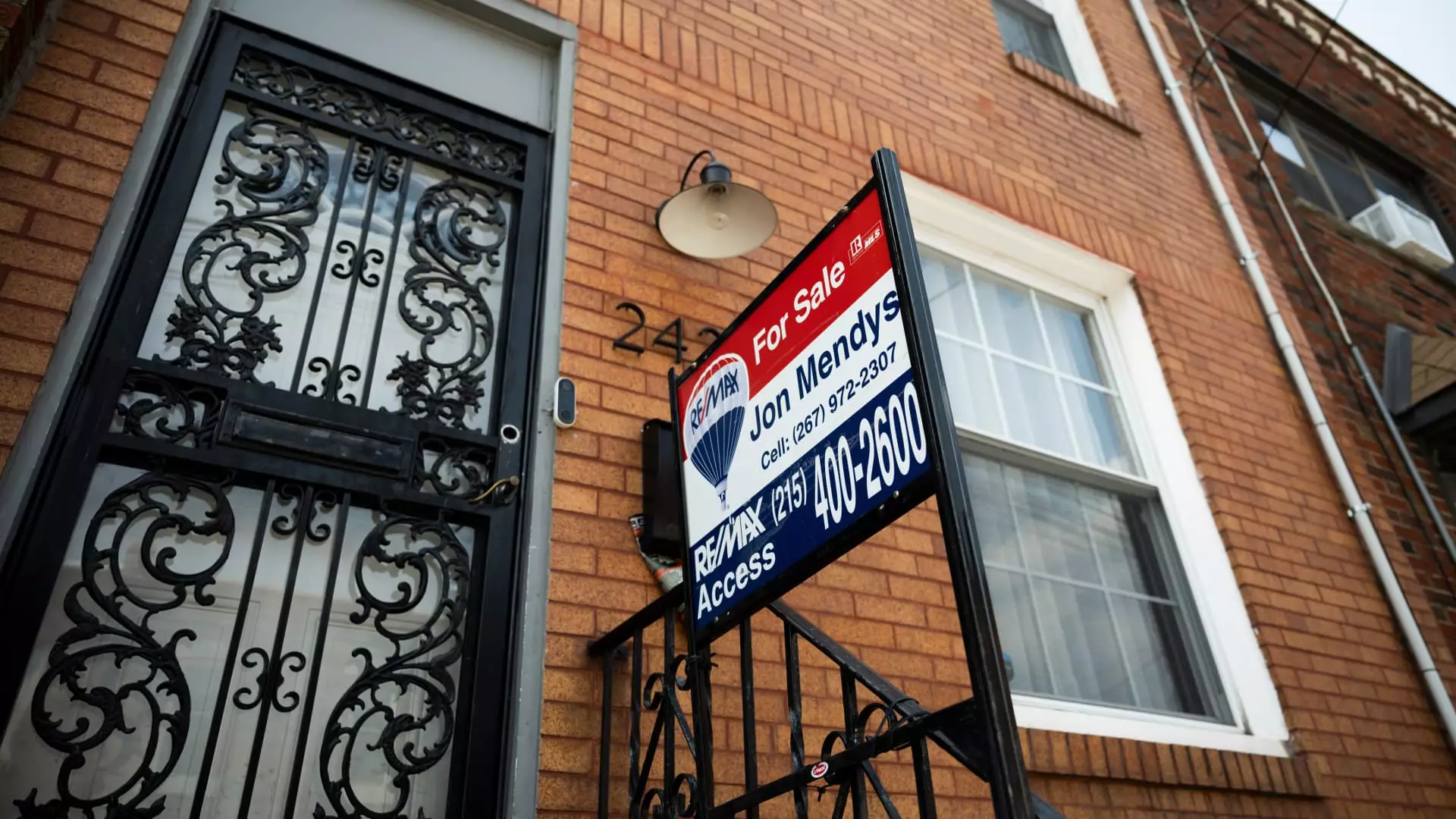The U.S. housing market is experiencing a significant downturn, marked by a combination of high mortgage rates, limited inventory, and elevated home prices. These factors are transforming the landscape of home buying in ways that present challenges for both buyers and sellers, contributing to a notable decline in sales activities.
Recent statistics shed light on the ongoing struggles within the housing sector. In January, sales of previously owned homes declined by 4.9%, dropping to an annualized rate of 4.08 million units as reported by the National Association of Realtors (NAR). This performance falls short of analysts’ expectations, who anticipated a decline of only 2.6%. The current sales figures represent a considerable drop from the historical norms, reaching levels not seen in over 15 years. While there was a 2% increase compared to January 2024, the overall outlook remains bleak, indicating long-term market challenges.
One possible explanation for this downturn stems from the timing of contract signings. Many deals reached closure in January likely stemmed from contracts penned in the previous months, specifically November and December, when mortgage rates briefly receded from over 7% into the 6% range. Lawrence Yun, the NAR’s chief economist, emphasizes that stagnant mortgage rates, despite the Federal Reserve’s attempts to cut rates, have left potential buyers hesitant. With home prices lingering at elevated levels, housing affordability continues to be a significant hurdle.
As the sales activity retracts, inventory levels reflect a gradual increase. By the end of January, the number of homes for sale climbed to 1.18 million, a 3.5% rise from December and a staggering 17% increase compared to the previous year. However, despite this uptick in listings, the supply remains insufficient, with only a 3.5-month inventory available at the current pace of sales. A balanced market is generally characterized by a six-month supply, which underscores the tight conditions still prevalent in the market.
The duration homes spent on the market has also been affected; January saw average listing durations reaching 41 days—the longest time on the market since early 2020, prior to the onset of the COVID-19 pandemic. This extended duration can be attributed to the continuing pressure on home prices resulting from limited supply, with the median home price soaring to $396,900, a 4.8% increase year over year and the highest recorded for January.
A closer examination of buyer behavior reveals a significant trend: all-cash offers constituted 29% of sales in January, though this percentage has declined slightly from the previous year’s 32%. This high ratio of cash transactions indicates that many buyers are leveraging their liquidity to navigate the turbulent market. Furthermore, first-time homebuyers remain particularly challenged, accounting for only 28% of sales—consistent with figures from a year ago but significantly below the historical average of roughly 40%.
Interestingly, home sales appear to be favoring the upper price echelons, with properties priced over $1 million experiencing a remarkable 27% rise in sales compared to last year. Conversely, more affordable homes ranging from $100,000 to $250,000 have seen sales decline by 1.2%. This alarming disparity highlights the challenges faced by lower-income buyers and suggests a polarization within the market where higher-priced properties thrive while entry-level homes remain stagnant.
Real estate professionals express concern about the ongoing trends, noting that although new listings are becoming more common, buyer traffic remains inadequate. Lawrence Yun’s observations reflect a troubling reality: even with increased efforts to stimulate the market, simply adding more signs does not guarantee greater buyer participation.
As the market grapples with these complexities, it remains clear that the interplay between elevated pricing, stagnant mortgage rates, and shifting inventory levels will dictate the future of the U.S. housing landscape. The necessity for both increased inventory and decreased mortgage rates will be paramount for re-engaging prospective buyers, particularly those looking to purchase their first homes or move up from their current residences. Without addressing these pressing concerns, the housing market may continue to stagnate, leaving many would-be homeowners in limbo.

